
NGC 524 is a lenticular galaxy in the constellation Pisces. It is at a distance of about 90 million light-years away from Earth. In the central bulge of the galaxy is visible gas forming a spiral structure. It is the largest galaxy in the small NGC 524 group of galaxies, which is associated with NGC 488 and its group. It was discovered by William Herschel in 1786.

NGC 936 is a barred lenticular galaxy in the constellation Cetus. It is at a distance of about 60 million light-years away from Earth. Its nucleus and prominent bar have high surface brightness. Because of the shape of the prominent bar, the nucleus and the ring of stars at the end of the barrel, the galaxy has been compared with the shape of a TIE fighter, from the Star Wars universe, and thus NGC 936 has been named Darth Vader’s Galaxy or Darth Vader’s Starfighter. By measuring the radial velocity of the disc, Kormendy found in 1986 that the disc is stable, which is the reason why it is so smooth.

NGC 1084 is an unbarred spiral galaxy in the constellation Eridanus. It is located at a distance of about 63 million light-years away from the Milky Way. The galaxy was discovered by William Herschel on 10 January 1785. It has multiple spiral arms, which are not well defined. It belongs in the same galaxy group with NGC 988, NGC 991, NGC 1022, NGC 1035, NGC 1042, NGC 1047, NGC 1052 and NGC 1110. This group is in turn associated with the Messier 77 group.
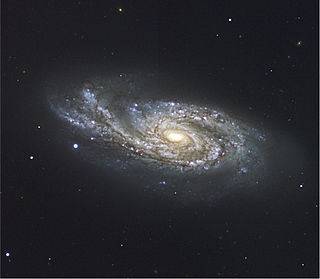
NGC 908 is an unbarred spiral galaxy in the constellation Cetus. It was discovered in 1786 by William Herschel. This galaxy is 56 million light years away from Earth. It is the main galaxy in the NGC 908 group, which also includes NGC 899, NGC 907, and IC 223.
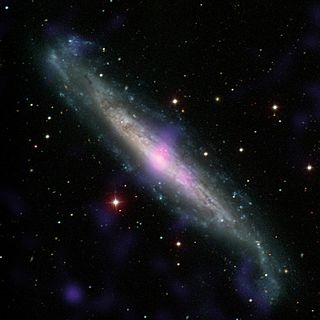
NGC 1448 or NGC 1457 is an unbarred spiral galaxy seen nearly edge-on in the constellation Horologium. It is at a distance of 55 million light years from Earth. It was discovered by John Herschel in 1835.
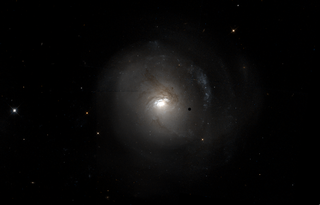
NGC 2782 is a peculiar spiral galaxy that formed after a galaxy merger in the constellation Lynx. The galaxy lies 75 million light years away from Earth, which means, given its apparent dimensions, that NGC 2782 is approximately 100,000 light years across. NGC 2782 has an active galactic nucleus and it is a starburst and a type 1 Seyfert galaxy. NGC 2782 is mentioned in the Atlas of Peculiar Galaxies in the category galaxies with adjacent loops.

NGC 1964 is a barred spiral galaxy in the constellation Lepus. The galaxy lies 65 million light years away from Earth, which means, given its apparent dimensions, that NGC 1964 is approximately 100,000 light years across. At its center lies a supermassive black hole, with estimated mass 2.5 × 107M☉. The galaxy features two tightly wound inner spiral arms within a disk with high surface brightness and two outer, more open spiral arms that originate near the inner ring. The outer arms feature few small HII regions.

NGC 4494 is an elliptical galaxy located in the constellation Coma Berenices. It is located at a distance of circa 45 million light years from Earth, which, given its apparent dimensions, means that NGC 4494 is about 60,000 light years across. It was discovered by William Herschel in 1785.

NGC 4699 is an intermediate spiral galaxy located in the constellation Virgo. It is located at a distance of circa 65 million light years from Earth, which, given its apparent dimensions, means that NGC 4699 is about 85,000 light years across. It was discovered by William Herschel in 1786. It is a member of the NGC 4699 Group of galaxies, which is a member of the Virgo II Groups, a series of galaxies and galaxy clusters strung out from the southern edge of the Virgo Supercluster.

NGC 3631 is a spiral galaxy located in the constellation Ursa Major. It is located at a distance of about 35 million light years from Earth, which, given its apparent dimensions, means that NGC 3631 is about 60,000 light years across. It was discovered by William Herschel on April 14, 1789. It is a grand design spiral galaxy seen face on.

NGC 3923 is an elliptical galaxy located in the constellation Hydra. It is located at a distance of circa 90 million light years from Earth, which, given its apparent dimensions, means that NGC 3923 is about 155,000 light years across. NGC 3923 is an example of a shell galaxy where the stars in its halo are arranged in layers. It has more than twenty shells. It was discovered by William Herschel on March 7, 1791.
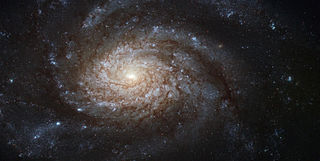
NGC 3810 is a spiral galaxy located in the constellation Leo. It is about 50 million light years from Earth, and estimated to be about 60,000 light years in diameter. William Herschel discovered it on 15 March 1784.

NGC 5468 is an intermediate spiral galaxy located in the constellation Virgo. It is located at a distance of about 140 million light-years from Earth, which, given its apparent dimensions, means that NGC 5468 is about 110,000 light-years across. It was discovered by William Herschel on March 5, 1785.
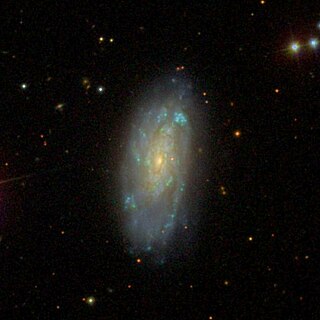
NGC 7448 is a spiral galaxy located in the constellation Pegasus. It is located at a distance of circa 80 million light years from Earth, which, given its apparent dimensions, means that NGC 7448 is about 60,000 light years across. It was discovered by William Herschel on October 16, 1784. It is included in the Atlas of Peculiar Galaxies in the category galaxies with detached segments.

NGC 5965 is a spiral galaxy located in the constellation Draco. It is located at a distance of circa 150 million light years from Earth, which, given its apparent dimensions, means that NGC 5965 is about 260,000 light years across. It was discovered by William Herschel on May 5, 1788.

NGC 6907 is a spiral galaxy located in the constellation Capricornus. It is located at a distance of about 120 million light years from Earth, which, given its apparent dimensions, means that NGC 6907 is about 115,000 light years across. It was discovered by William Herschel on July 12, 1784. The total infrared luminosity of the galaxy is 1011.03 L☉, and thus it is categorised as a luminous infrared galaxy.

NGC 3640 is an elliptical galaxy located in the constellation Leo. It is located at a distance of circa 75 million light years from Earth, which, given its apparent dimensions, means that NGC 3640 is about 90,000 light years across. It was discovered by William Herschel on February 23, 1784. It is a member of the NGC 3640 Group of galaxies, which is a member of the Leo II Groups, a series of galaxies and galaxy clusters strung out from the right edge of the Virgo Supercluster.

NGC 3656 is a peculiar galaxy formed by the collision of two galaxies in the constellation of Ursa Major. It is located about 135 million light years away from Earth, which means, given its apparent dimensions, that NGC 3656 is approximately 70,000 light years across. It was discovered by William Herschel on April 14, 1789.
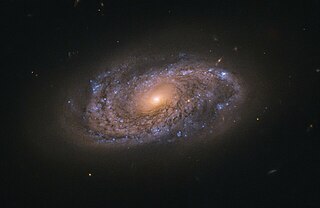
NGC 2906 is a spiral galaxy located in the constellation Leo. It is located at a distance of circa 120 million light years from Earth, which, given its apparent dimensions, means that NGC 2906 is about 75,000 light years across. It was discovered by William Herschel on December 28, 1785.

NGC 3393 is a barred spiral galaxy located in the constellation Hydra. It is located at a distance of circa 180 million light-years from Earth, which, given its apparent dimensions, means that NGC 3393 is about 140,000 light-years across. It was discovered by John Herschel on March 24, 1835. It is a Type II Seyfert galaxy. The galaxy is known to host two supermassive black holes, which are the nearest known pair of supermassive black holes to Earth.





















